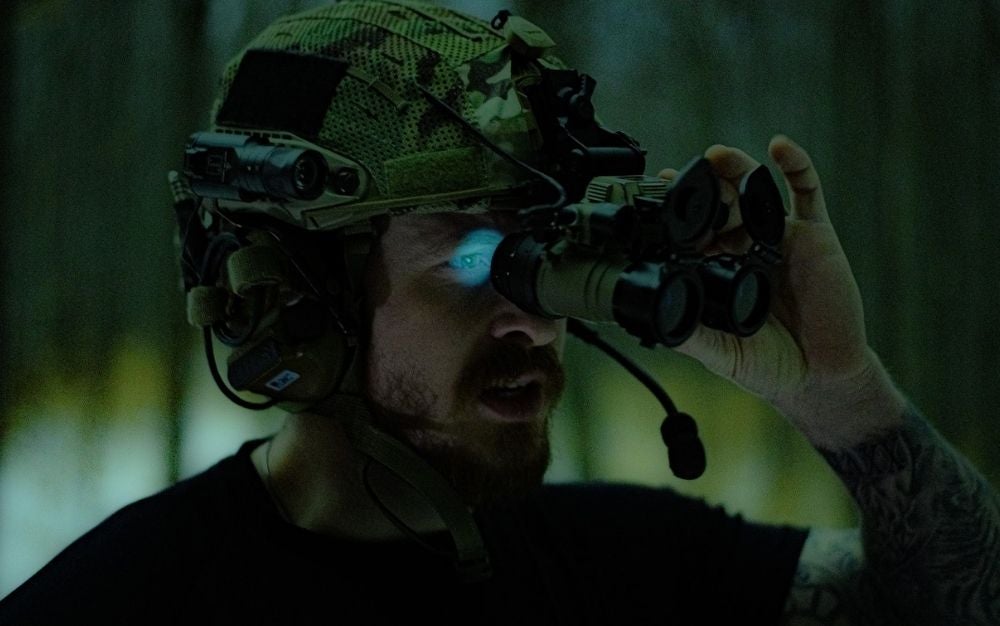Types of Night Vision Devices

Night vision devices (NVDs) and night optical/observation devices (NODs) are optics that do not rely on ambient light and instead use an active infra-red illuminator to provide the user with a sight picture. The image is usually in black and white, monochrome, like most cameras. Some devices allow the image to be viewed in color with varying levels of effectiveness.
Night Vision Binoculars
Night vision binoculars combine an image intensifier tube and a high magnification telescope in a single unit. The operator looks through the binocular’s eyepiece in order to magnify the image from the night vision device. A switch on the housing allows for interchanging one view with another, allowing operators to switch from a magnified image without having to remove their eyes from the monocular’s viewer.
Night Vision Goggles
The earliest technique of night-vision equipment was simply called “night-seeing” or nocturnal vision; active electronically by infrared light sources and passive chemically by eye rods sometimes called dark light receivers. These gave soldiers sight in total darkness but did not allow color differentiation of targets, which remained blurry and indistinct.
Night Vision Monoculars
Night vision monoculars work like night vision binoculars, except they only have a single eye-piece. The image from the NVD is reflected into the users right or left eye and it is not a zoomable device. Monoculars are handheld devices that mount to a head harness for hands free capability.
Night Vision Scopes
Night vision scopes utilize an objective lens which acts as a gathering optic similar to binoculars but instead of having both eyes open when viewing one uses an electronic imaging sensor inside the eyepiece on one eye at a time while holding down a switch. An advantage over binocular night-vision optics is that the field of view with no magnification allows more ambient light to enter increasing situations awareness and reducing the need for an NVD.
Night Vision Systems
A night vision system is a complete assembly of several components which work together to provide nighttime surveillance and battlefield situational awareness. The major components include: head-mounted, weapon sighted devices; standard optical day scopes equipped with auxiliary infrared illuminators; sighting lasers that can be attached or built into devices; thermal sights mounted on weapons or vehicles as small as rifles, medium machine guns, tanks and helicopters.
The faceplate should be essentially flat black without any reflective silvering visible from the front of the device. It should not have colored lenses to distort your view, only a clear one. Also make sure all lens caps are in place at all times when not in use.